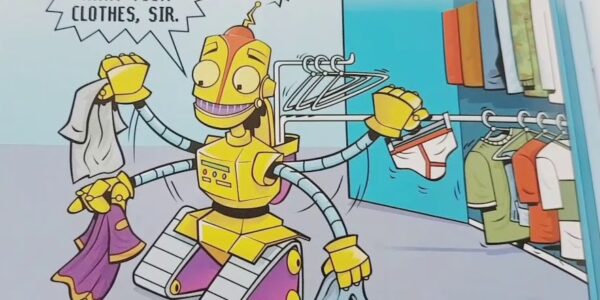Want someone to put away your tools at the end of the day? Someone to gather up all the cans and take them to the recycling station? Someone to clean up the break room, including putting that package of cooki4es into the right cupboard? Enter the Tidybot!
Turns out large language models (like ChatGPT and Google’s PaLM2) possess the technology that allows robots to learn how to tidy things up and put them away, without specific programming.
Provide examples
Previous attempts to get robots to handle unpredictable sets, like a bunch of toys left all over a floor or a load of laundry, have required extensive programming or training on enormous data sets. LLMs are already trained on large data sets. They are designed to take information like “soda cans go in the recycling bin and plastic wrappers go in the trash” and act on it.
Tidybot can grasp rules of this type from one or two interactions with an individual and thereafter can be trusted to follow the rules. Watching the videos of Tidyboy in action at the link above, it is hard not to focus on how incredibly slow it is. It would not be cost-effective to use Tidybot to pick up scattered items if you had any humans available for the job.
However, if you imagine that the humans are all off doing something more specialized and creative, it could be nice to come back into a room and find that everything got tidied up without human effort. In experiments, Tidybot got 85% of the objects into the right places with prompts like these:
# Summary: Put light-colored clothes in the drawer and dark-colored clothes in the closet. objects = [“black socks”, “white shirt”, “navy socks”, “beige shirt”]
receptacles = [“drawer”, “closet”] pick and place(“black socks”,
pick and place(“white shirt”, “drawer”)
pick and place(“navy socks”, “closet”)
pick and place(“beige shirt”, “drawer”)
Industrial applications
Tidiness is valuable in industrial settings, and pick and place commands can be very useful. Sorting and moving objects have obvious value in many manufacturing settings. Beyond the specific tasks Tidybot has learned, it’s clear that the overall outcome of having a robot learn actions from simple plain English statements has enormous value for industry.
We will be watching these applications with interest. In the meantime, when you need service and support for your Indramat motion control systems, call us for immediate assistance.



